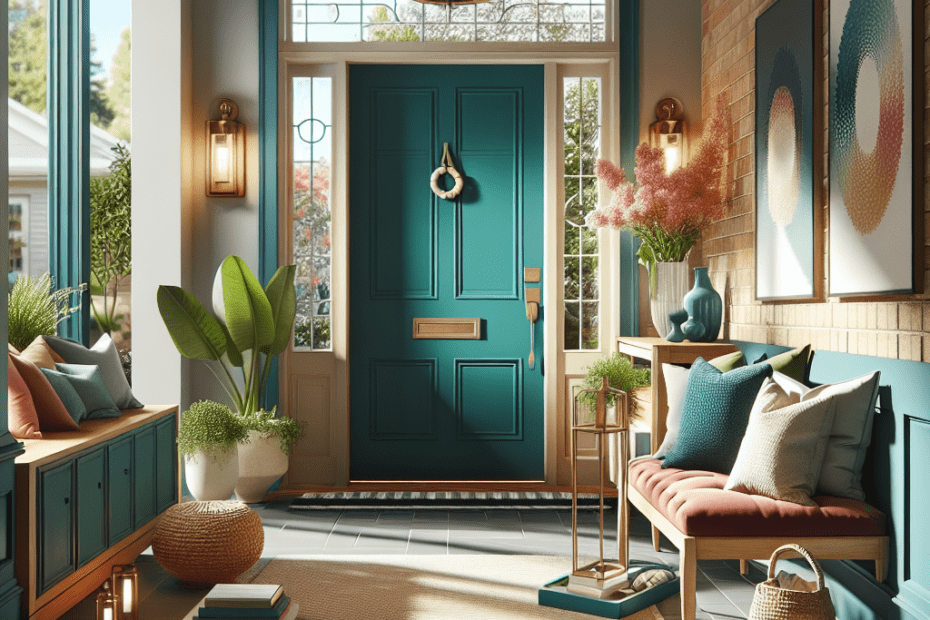“`html
When someone walks into a home, the entryway sets the tone for the entire experience. By understanding and applying entryway color theory, they can create a first impression that is both welcoming and stylish. Color has a profound impact on mood and perception, making it an essential tool in interior design. According to a study by Color Psychology, people are 80% more likely to remember information when it’s associated with color.
Understanding Entryway Color Theory
Entryway color theory involves using colors strategically to convey specific emotions and messages. Colors can be warm, like reds and oranges, which evoke energy, or cool, like blues and greens, which offer tranquility. A well-chosen color scheme can make an entryway feel larger, cozier, or even more sophisticated.
Color Wheel Basics
At the heart of color theory is the color wheel, a visual representation of primary, secondary, and tertiary colors. By understanding complementary, analogous, and triadic color schemes, designers can create a harmonious entryway. Complementary colors, located opposite each other on the wheel, create a vibrant look, while analogous colors, next to each other, offer a softer, more unified effect.
The Psychological Impact of Entryway Colors
Each color has its own psychological effects. For example:
- Red: Energetic and exciting, stimulating the senses.
- Blue: Calm and serene, promoting peace.
- Green: Refreshing and natural, ideal for a balanced approach.
- Yellow: Bright and cheerful, creating a warm welcome.
Understanding these effects helps in choosing the right color palette for an entryway.
Designing a Welcoming Entryway With Color Theory
To apply entryway color theory effectively, designers start by defining the mood they want to create. For those looking to project warmth, they might choose a combination of warm tones like yellow and orange. Conversely, a calm and inviting space might feature soft blues and greens.
Design Strategies
Here are some strategies to consider when using color theory in an entryway:
| Strategy | Explanation |
|---|---|
| Accent Walls | Use a bold color on one wall to create a focal point and add depth. |
| Color Blocking | Incorporate blocks of different colors to define areas within the entryway. |
| Textured Finishes | Play with various finishes like matte and glossy to add interest without changing the color. |
Balancing Colors
Balance is key to using color theory effectively. Too many bold colors can overwhelm, while too many neutrals may seem bland. A well-balanced entryway typically mixes bold and neutral tones. Adding textures and patterns, like rugs or artwork, can also enhance the overall aesthetic without overpowering the space.
Statistics on Color Influence
Statistical data underscores the importance of color in design. According to a survey by The Good, 90% of snap judgments about products can be based on color alone. For entryways, this means that a carefully chosen color palette can significantly impact a visitor’s perception of the home.
Key Takeaways
- Entryway color theory can significantly influence first impressions.
- Understanding the color wheel and psychological effects of colors is crucial.
- Design strategies such as accent walls and color blocking can enhance the entryway.
- Balance between bold and neutral colors creates a harmonious look.
- Statistics highlight the powerful impact of color on perception.
FAQ Section
- What is entryway color theory?
Entryway color theory involves using a strategic color palette to create specific emotions in a home’s entryway.
- How does color affect mood in the entryway?
Colors can evoke feelings like warmth, calmness, and energy, affecting how welcoming an entryway feels.
- Which colors are best for a small entryway?
Light colors such as soft blues, greens, and neutrals can make a small entryway appear larger and more open.
- Can bold colors work in an entryway?
Yes, bold colors can work well when balanced with neutrals or used as accents to create focal points.
- Why are statistics important in entryway color theory?
Statistics provide evidence of how color choices impact perceptions, helping design more effective and appealing spaces.
“`
